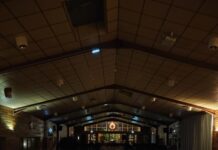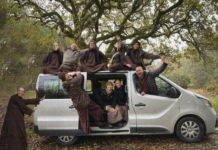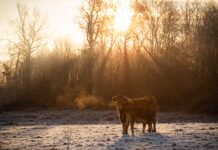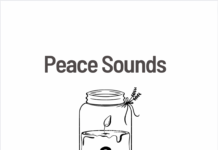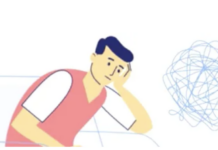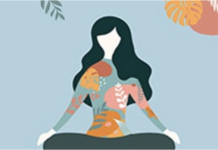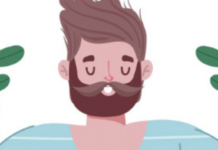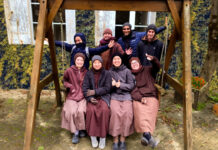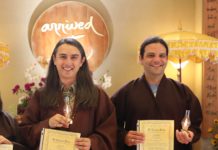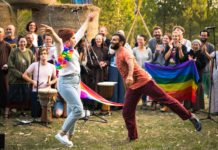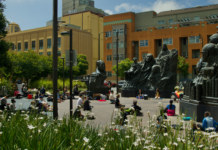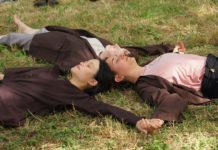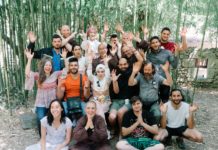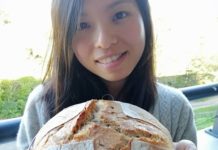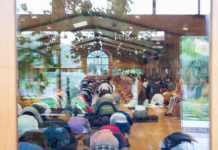This interview originally appeared on parallax.org
Kaira Jewel Lingo is a Dharma teacher who lived as a nun for fifteen years in the international Plum Village community of Thich Nhat Hanh, where she also led many Wake Up retreats. In this interview by Liz McKellar from Parallax Press, Kaira speaks about her thoughts on Black History Month, the importance and impact of mindfulness and meditation on Black, Indigenous, and People of Color (BIPOC) communities, and her upcoming book on navigating difficult times of transition.
Kaira Jewel Lingo is author of the upcoming book We Were Made for These Times: Skillfully Moving through Change, Loss, and Disruption which is launching in October 2021. It offers accessible advice on navigating difficult times of transition, drawing on Buddhist teachings on impermanence to establish equanimity and resilience.
Why was it important to you, to focus on teaching Mindfulness and Meditation to BIPOC?
Kaira Jewel Lingo: I want to start with a story. After accompanying Thay [Thich Nhat Hanh] and the community on numerous tours through the US and seeing how very white they were, Larry Ward, another Black practitioner, and myself approached Thay and we asked if he would teach a retreat for BIPOC.
He looked at us and then he looked at his skin and he said, “I’m a person of color.” So he agreed, and in 2004, we had our first BIPOC retreat in the Plum Village tradition. We thought we’d get 70 people but four hundred came. It was amazing to see there was so much thirst for the Dharma. When we created a place that was safe, they were so happy to come. I remember that first night of the retreat looking out at a sea of now brown, yellow, red, and black faces was so empowering and remarkable!
When I disrobed and returned to life as a layperson, I really wanted to keep supporting folks of color to have access to the Dharma. It really makes a difference for people to be able to see a teacher who looks like them, to see other people who look like them, who had similar experiences that they had, in terms of facing white supremacy on a daily basis. So every year, beginning in 2015, Marisela Gomez and myself would offer a retreat for folks of color in Baltimore, and that’s become an annual thing.
That was a real love and joy of mine to offer spaces that are welcoming and sensitive to that experience. It’s important for me as someone who also identifies as Black, Indigenous, and a person of color. There’s also something about being able to create spaces for people’s more specific identities—and I identify also as Black—to be able to be in a community where we can unpack the specific experience of being of Black and African descent. That allows for some healing that wouldn’t otherwise be possible for me. So, I might be holding space [for others], but I’m also really deeply benefiting from just connecting.
What is the impact of meditation and mindfulness on the BIPOC individual?
Kaira Jewel Lingo: I feel what’s so powerful about Thay’s [Thich Nhat Hanh’s] teachings is the invitation and the possibility of coming home to ourselves. That has a special meaning for BIPOC folks who have often been kidnapped, and stolen from their homes. Who have been denied the right to establish a home. Who’ve been kicked out of their homes. Who’ve been redlined out of being able to purchase or live in certain places. There’s been a lot of removing BIPOC people from their homes, from their ancestral lands.
So a teaching that helps people to find our true home inside of us is very powerful. This teaching is the teaching of liberation; it’s about getting free, and that has been the deepest thirst for so many “communities of culture” as Resmaa Menakem names it. So the practice of meditation and mindfulness offers a path to liberation in terms of freedom from our suffering, hatred, and internalized violence.
It also can help us to deal with really painful emotions, and not just our own, but our ancestral inheritance that has both incredible beauty and resilience but also traumatic retention and deep suffering. So, [there is] the [Plum Village] practice of Touching the Earth, for example, very powerful practices of transforming ancestral suffering, of taking refuge in the earth. Of letting ourselves be held in something bigger than ourselves as we heal our own and our ancestral trauma, from our family, spiritual lineage and our land ancestors.
Please click here to read the full interview

